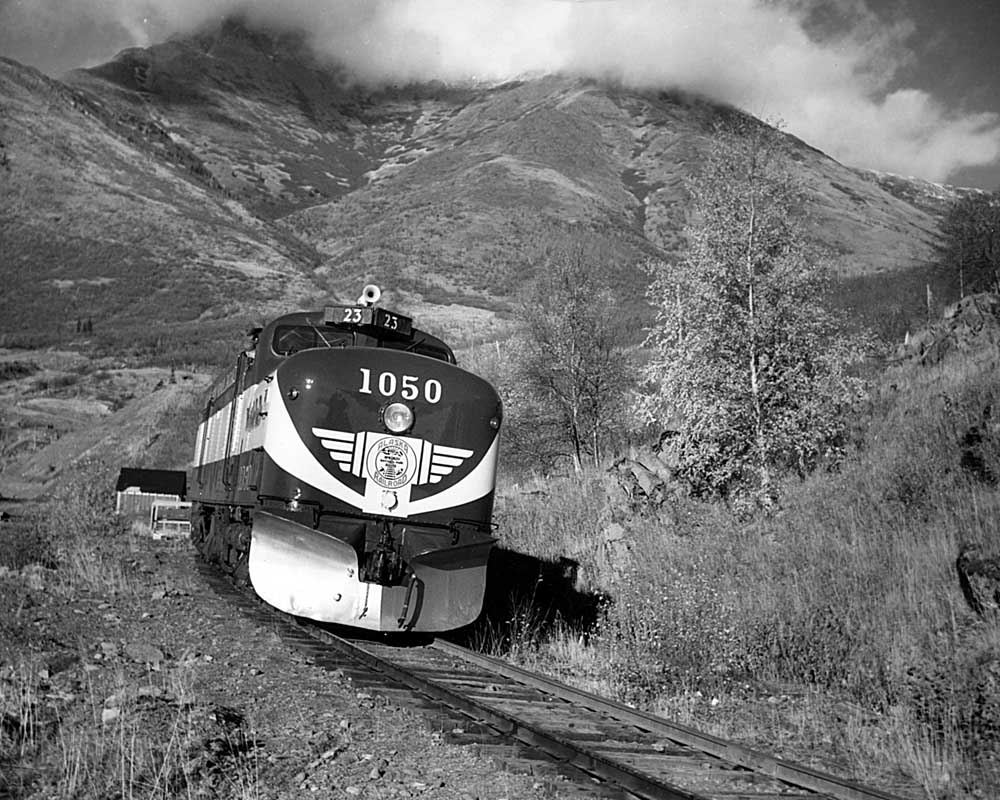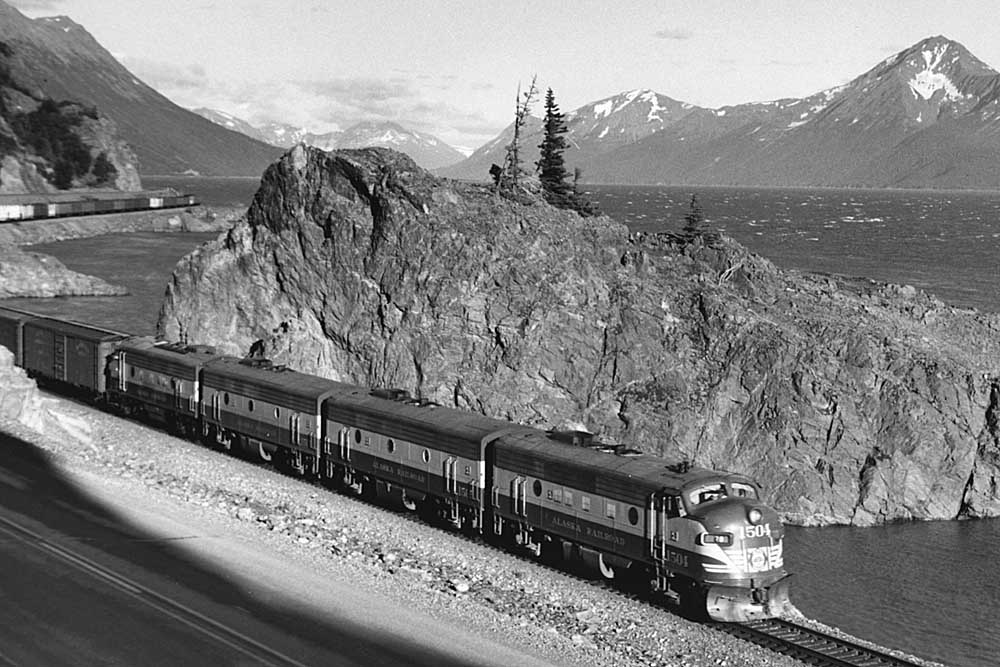
Early last spring, it was time to plan a summer vacation and get to some unfinished business. Alison and I agreed on the overall goal: get to Alaska. For her it was the call of Denali National Park and the fjords along the coast south of Seward. For me (no surprise), it was the chance to ride the Alaska Railroad.
I’d ridden trains in all the Lower 48 states. It was time for No. 49. I was partly inspired by writer Tom Murray’s expansive profile of the ARR in the December 2011 issue of Trains, “Ice Railroaders,” the details of which pretty much hold up 13 years later. Tom’s article is terrific, a great guide to the history of this one-of-a-kind railroad.
So off we went in mid-August, armed with an excellent itinerary drawn up with the expert help of an Alaska Railroad agent. It’s hard to imagine a railroad better oriented to taking care of tourists; summer passenger traffic drives upwards of 20% of its annual revenue. In our case, the railroad took care of pretty much everything, lining up hotels in Anchorage and Denali, arranging tours of the national park, and booking us on Major Marine Tours. All we had to do was arrange to get there, which Alaska Airlines was happy to do with two pairs of flights from Milwaukee to Anchorage via Seattle.
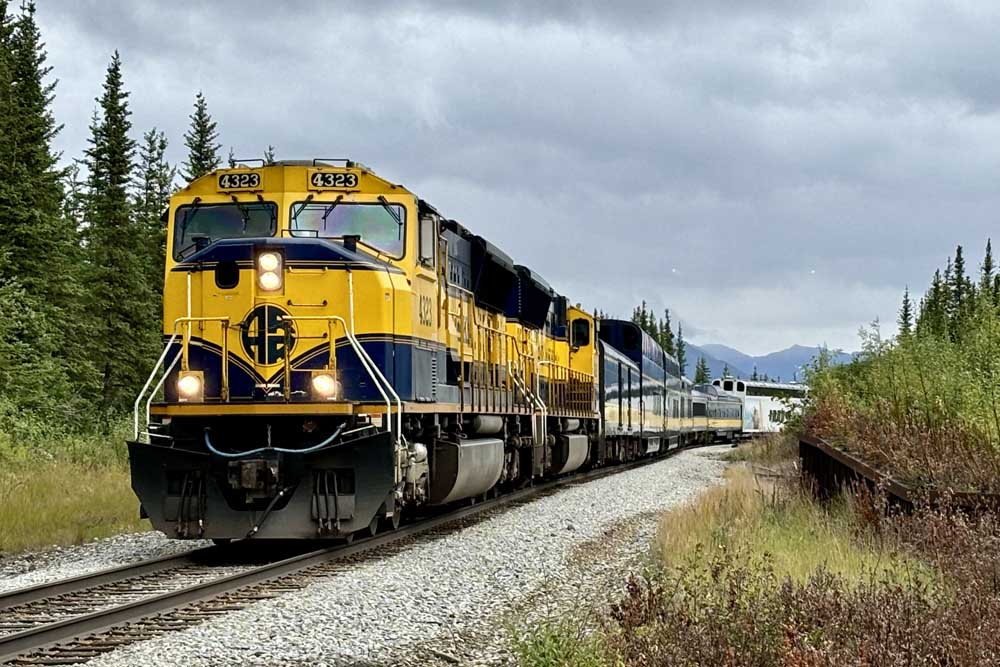
We ended up riding 696 miles of Alaska Railroad main line, aboard the Denali Star up to the national park for three days of hiking and sightseeing, then returning to Anchorage to take the Coastal Classic down to Seward. We rode first class on both legs of the trip, luxuriating in the ARR’s glass-topped bilevel cars and its excellent dining service. Not to mention the open upper platforms at the end of each bilevel car, a good place to lean out and see the onrushing right of way.
I’m not sure what I could say about the beauty of Alaska that hasn’t been said countless times by anyone who has visited the state, especially that part of it visible from the ARR mainline. Over the seven hours on each Anchorage-Denali leg, we were treated to a seemingly endless procession of bridges over raging rivers (be ready for Hurricane Gulch), snow-dusted mountain ranges, the deepest pine forests imaginable, and, if you’re lucky, an occasional glimpse of 20,310-foot Denali, so often shrouded in clouds but very obliging on our sunny return trip.
We also witnessed some interesting railroad operations, including the customary meet of the two daily Denali Stars at a lonely 10,500-foot siding called Colorado, Milepost 296.5, where the trains pause for the crews (everyone except service personnel) to switch places, one heading straight back north to Fairbanks, the other returning to Anchorage.
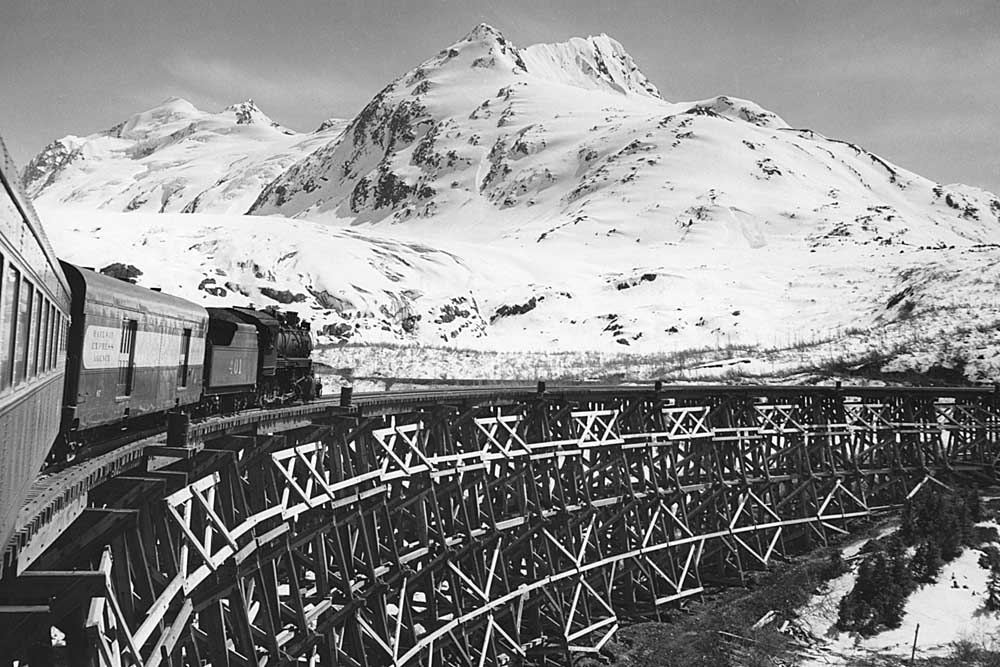
Some impressions after a week spent on the state-owned Alaska Railroad:
- As Murray stated in his story, “The ARR may be (classified as) a regional, but it’s like a miniature Class I.” That’s something we learned right away as our train headed north from Anchorage. Everything looked heavy-duty, from the mostly welded rail to the CTC signaling to the frequent use of concrete ties. It was a smooth ride. Not fast, mind you — I’m guessing the average speed is around 40 mph, with occasional stretches of 60, but that has more to do with the ARR’s rugged profile than the condition of the railroad.
- You have to admire ARR’s all-EMD motive-power roster. Along with some older GP38-2s and GP40-2s, the railroad is dominated by the company’s 28 burly SD70MACs, delivered in three groups between 1999 and 2007. That’s pretty much all we saw over the entire week. They were on all the passenger trains, of course (12 are equipped with head-end power), but also the few freight trains we saw. In the summer, ARR appears to run through freights at night. The SD70MAC is famous for its 1993 debut on Burlington Northern, wearing a unique-to-the-class cream-and-green paint scheme and becoming emblematic of Powder River coal service. But for me, the SD70MAC shines brightest in ARR’s handsome blue and yellow.
- With seven hours to enjoy the scenery (and where a cell signal permitted), I found myself Googling ARR’s fascinating and occasionally unconventional diesel history. The railroad ended the steam era by buying dozens of ex-Army Alco RSD-1s and later some RSD-1s wearing a streamlined shroud that author Louis A. Marre likened to “a tinplate toy representation of an EMD F7,” shown here in a photo of bulbous No. 1050. The railroad later bought 22 GP7s, also acquired from the Army. Most of all, you might associate the ARR with F units, of which they had more than 30.
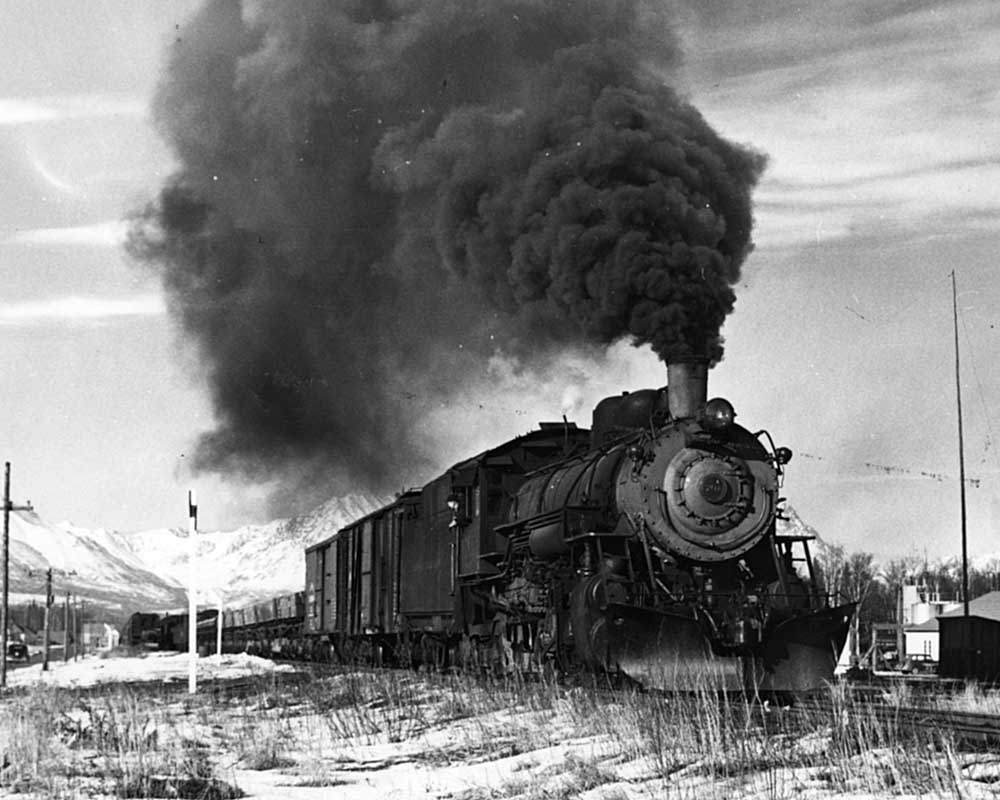
- Speaking of ARR’s steam era, its roster was modest in size and technology, dominated by various classes of 2-6-0s, 2-8-0s, and some 2-8-2s, along with the biggest engines on the property, a pair of small-boilered 4-8-2s that channeled 143,100 lbs. of tractive effort through 63-inch driving wheels. By far, the most famous ARR steamers were its dozen S160-class Army 2-8-0s delivered to the railroad in 1944, compact workhorses for which “cost-effective” was the operative phrase. I wish we’d had time in our schedule to visit surviving ARR 2-8-0 No. 557, currently under restoration in a shop in Wasilla by the non-profit Engine 557 Restoration Company (https://557.alaskarails.org/)
- The most spectacular part of our trip came on the Coastal Classic as we cut through the Kenai Mountains via Grandview, where the nascent ARR was obligated to gain altitude and sneak through the mountains via a loop with which the railroad crossed over and under itself. The loop — including a long curving wooden trestle 106 feet high — was eliminated in 1951 with a bypass, which was possible to build as the adjacent Bartlett glacier retreated. Our youthful train host did her best to point out remnants of the loop, but, alas, more than 70 years of overgrowth made them impossible to see, at least for me.
As we flew out of Anchorage a few days later, we were satisfied we’d taken care of some of our unfinished business in spectacular fashion. Hearing of our upcoming trip, some friends said we would find the experience magical. Even President Warren G. Harding said so, on July 15, 1923, when he helped drive the Alaska Railroad’s golden spike at Nenana, deep in the Alaskan interior. “It is not possible to liken a railway to a magician’s wand, but the effect to me is the same,” said Harding. We agree, Mr. President.
